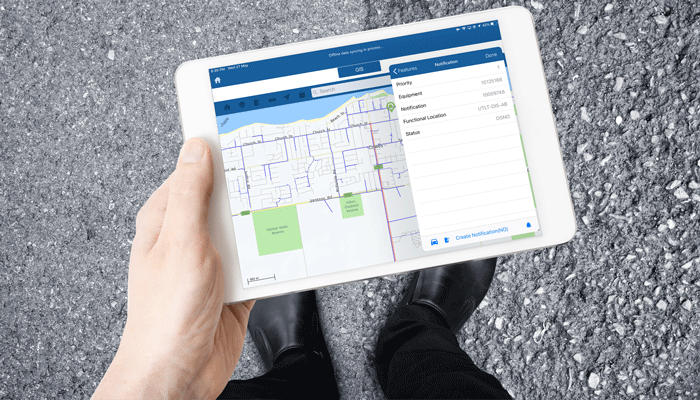With technology seeping across all segments of the economy, there is little doubt that the entire life cycle of asset management can be automated to ensure a seamless and an efficient process, saving lot of time and resources. With company’s physical assets at the very center of its core business, some companies, particularly in the utilities segment are investing heavily on automating their asset intensive processes, though they have their own set of challenges. Put it the other way round, asset intensive organizations are being challenged with the implementation of the information technology to maximize their returns on their infrastructure investments. It is in this context, an enterprise asset management (EAM) system is highly recommended to mitigate the challenges encountered by an organization that is on verge of IT implementation or has already implemented a disorganized IT system with minimal value. A typical EAM solution needs to incorporate integrated technology and appropriate management practices & principles to make the best use of software and other related aspects.
What is an EAM solution?
An EAM solution incorporates a suite of software tools to help in tracking, analysis and reporting of assets and other work-related information across an organization. When EAM is incorporated judiciously, an organization can perceive a slew of benefits that includes:
- Improved performance of assets including tracking the asset condition and minimizing the assets’ life cycle costs
- Improved labor performance and safety
- Instant decision support for vendor performance evaluations, material usage and service quality
- Effective tracking of all financial parameters including budgeting, costing, cash flow forecasting and financial reporting.
Goal of an EAM solution
A typical goal of any EAM solution is to help in the collection and distribution of asset related information that should be easily accessible to a multitude of users – from field workers to dispatchers, engineers, line managers and other executive personnel. Apart from that, it should exhibit the flexibility to view or report the information in multiple formats in sync with the diverse requirements of each business unit.
Mobile EAM – a new business practice
A one step ahead in this direction is the emergence of mobile technologies that has become pervasive in all fields including EAM. Integrating mobile devices and apps with current asset management solutions can save time, minimize errors and streamline processes - reduce operational expenses and boost the bottom lines. In addition to that, mobile EAM contributes to greater operational improvements through minimized inventory and maintenance costs.
The basic idea behind mobile EAM as a business practice is that it enables remote workers (who spend most of the time on field) to access data from the organization’s server using a handheld or other mobile device. EAM comprises the management of an organization’s entire portfolio of assets across various processes including adding/minimizing the equipment, replacement, over-hauling, and finances, among other things. The net result is the decreased total cost of ownership (TCO) that is one of the primary objectives of mobile EAM.
GIS Integration with Asset Management
A new technological advancement in the arena of EAM system is the integration of Geographical Information Systems (GIS) into the asset management landscape. With GIS integration, EAM can play a pivotal role across utilities, energy, government, transportation and many other asset-intensive industries by offering the capability to manage and represent the geographic locations, proximity, adjacency and tracking of assets. In fact a spatial view of an asset inventory offers greater value addition to supervisors’ abilities, workers’ efficiency and generates a host of other intangible benefits. The overall ability to visually display the asset data vis-à-vis employee’s planned or completed work activities, in addition to displaying features such as roads, buildings and sidewalks, among other things can create a huge difference.
When GIS is integrated into a mobile EAM solution, it can enable map based views of the asset and work information. Extended graphical display and data analysis functionality becomes feasible, as there is a database relationship between the spatial data in the GIS, and information of the assets and the performed work on those assets in EAM. You can perform a spatial analysis on the asset-related information to help identify trends or to assess the impacts of proposed operations that can be later displayed on a map to help in quick decision making process.
Simply stated, to judiciously manage geographical assets, enterprises need to have an world class mobile solution deployment that include a map-based user interface – integrates data from EAM systems with data from GIS.
Innovapptive’s contribution in the EAM space
Innovapptive has identified the potential of the mobile EAM market and developed a cutting SAP enterprise work order management management solution (mWorkOrder) in tune with the enterprise asset requirements. The beauty of this app is SAP users can access this app from the comfort of their mobiles, anywhere, anytime – it connects to the SAP's plant maintenance module at the backend to ensure effective data synchronization. However, the key differentiator of this app is the integration of latest GIS technologies into this apps’ landscape to provide an incredible asset tracking and user experience.
Innovapptive’s collaboration with Critigen – a new milestone
In this regard, Innovapptive has collaborated with an industry leader in GIS services – Critigen that is a full-lifecycle Geospatial systems integrator, helping clients to enhance their business performance through spatial IT solutions. Critigen has been playing a pivotal role in providing services in this arena by effectively integrating the business data (ERP) and geo-spatial (GIS) in the context of business processes.
With the availability of the Critigen's GIS Solution on mWorkOrder, the SAP customer ecosystem will be able to efficiently manage and maintain geographically dispersed assets and provide relevant work order information with on-demand access to asset and work history on mobile devices and desktops. Simply stated, this solution adds value to SAP customers by enhancing the productivity and safety of their field workers across utilities, oil & gas and transportation industries.
Business value of geo-enabled mobile solutions include:
- Better efficiency in workflow processes, enabling quick decision making through the understanding of location and spatial relationships
- Minimized operational risk and
- Increased compliance on account of instant access to integrated information through multiple enterprise systems including GIS for field personnel.
If you would like a demo of Innovapptive’s portfolio of Native or Web based mobile solutions, please click on the button . Alternatively, if you would like to discuss with an Innovapptive solution expert, you can reach out to us by emailing us at sales@innovapptive.com or you can reach a sales representative at (713) 275-1804.
. Alternatively, if you would like to discuss with an Innovapptive solution expert, you can reach out to us by emailing us at sales@innovapptive.com or you can reach a sales representative at (713) 275-1804.




